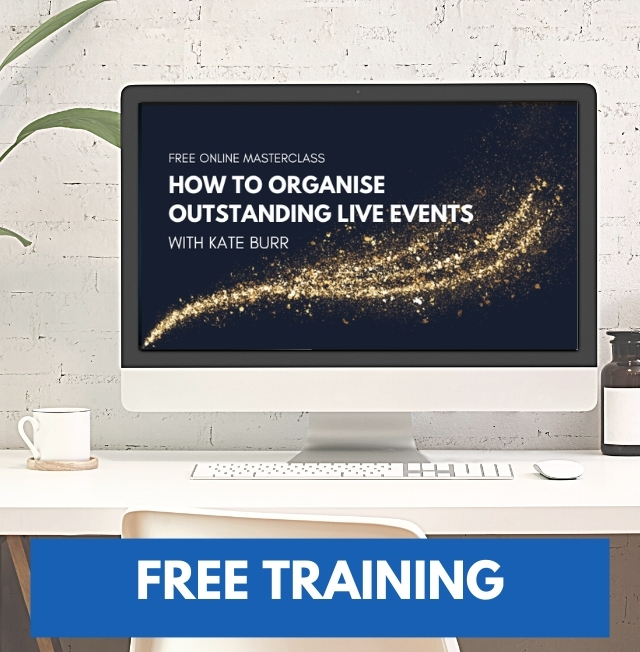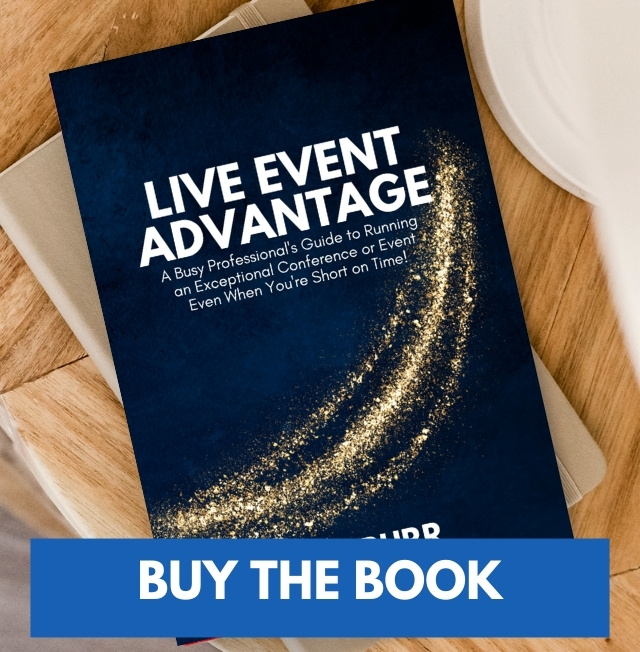As an Event MC you are the person in charge of audience experience.
A good audience experience can help make an event outstanding. A poor audience experience can make an event “just ok.”
As the MC, you are one who will set the tone and the vibe for the event. It’s like you are in charge of the event’s “X factor” – you won’t be able to quite put your finger on it – but if it’s off it’ll seem wrong – and if it’s on it’ll be fantastic.
The start of the event is crucial for setting the tone, as we all know that “first impressions count!” So how do you create a good audience experience? Well there are 7 key things an MC can do at the start of the event to make sure it kicks off with a bang!
1.Create an Audience
An MC’s first job is to turn a room full of people into an audience and unify them as a collective group. To the uninitiated, “a room full of people” and an “audience” might seem like the same thing, but trust me it’s not.
A group of people sitting on chairs in a room is not an audience. An audience is a group of individuals that are now connected at some level, on the same page and ready to participate in your event.
2. Transition the Audience
Think about it. Every person in the room was doing something completely different only 15 minutes before sitting on those chairs. Some were getting coffee, some were trying to park a car, some were on a business call, some were sorting out family issues and some arrived at the venue 45 minutes early and have been networking their little hearts out ever since!
As the MC it is your job to transition everyone from what they were doing just before they arrived to now being 100% present and focussed on your event.
3. Take Control
One of your jobs as MC is to make the audience feel safe and secure. They want to know that things are in control so they can relax.
It’s like driving with a good driver vs one who’s really bad. When you are in the car with a bad driver, it can be really stressful as you keep on high alert, watching everything they do to make sure you are safe and don’t have an accident. When you are with a good driver however, it’s much easier to sit back, relax and enjoy the view.
It’s the same for an audience. They need to know that someone is in charge so they can enjoy the event.
4. Set the expectation
Setting an expectation for the audience may feel like you are telling people to “suck eggs”, but remember – they are not the MC or the Event Organiser. They haven’t seen the runsheet and have no idea what is going on unless you tell them. Make sure you quickly and succinctly address any of the major questions they have.
For instance, do the audience know:
- exactly what’s going on for the day?
- why they are there?
- when the are the breaks?
- what they are meant to be doing?
- where are the toilets?
- if there is charging stations for laptops and phones?
- are they allowed to take photos of the event?
- what should they do with their mobile phones?
- can they get paper or pens to write with?
- how long each session is going for?
- what time is it going to finish?
- what to do if they have a problem, question, who’s in charge, who can help them etc.
It may not seem that big a deal, but knowing where the toilets are and what time the breaks are, can make a huge difference to the comfort of an audience member who has had one too many coffees! (It’s also can mean the difference between everyone staying focussed or being interrupted by someone having to excuse themselves from the room.)
5. Position the speaker
Give the Speaker a head start by positioning them correctly. The Speaker needs to be put in context for the audience, so the audience is warm, friendly and receptive when they come out on stage.
- The Intro of the Speaker needs to answer the following questions for the audience:
- Who are they/ what do they do?
- Why are they here to talk to the audience?
- What are they talking about?
- Why do they matter?
- And why should they listen to them?
6. Get buy in from the audience
This is like a pulse check for the audience.
You can do a visual check to see the signs of an engaged audience, but it’s also a good idea to get an action or audible based buy in as well to make sure they are ready for the Speaker.
Things like “does that sound good?” or “hands up who’s excited?” or “please give them a round of applause” are great questions to ask to check if the audience are “warm”.
If you don’t get the desired response you can continue to prime the audience or reset expectations until the audience are ready with statements such as “oh come on – I said does that sound good?” or “I can’t hear you – please give them a very warm welcome to [Speakers name]”.
7. Get on with it
You are the MC, you have a very specific job to do.
That job is super important and will make a HUGE difference to how the event runs, but remember the event is not about you!
Once you have done your job, get on with it, introduce the Speaker, let them do their job and get out of the way!!!




